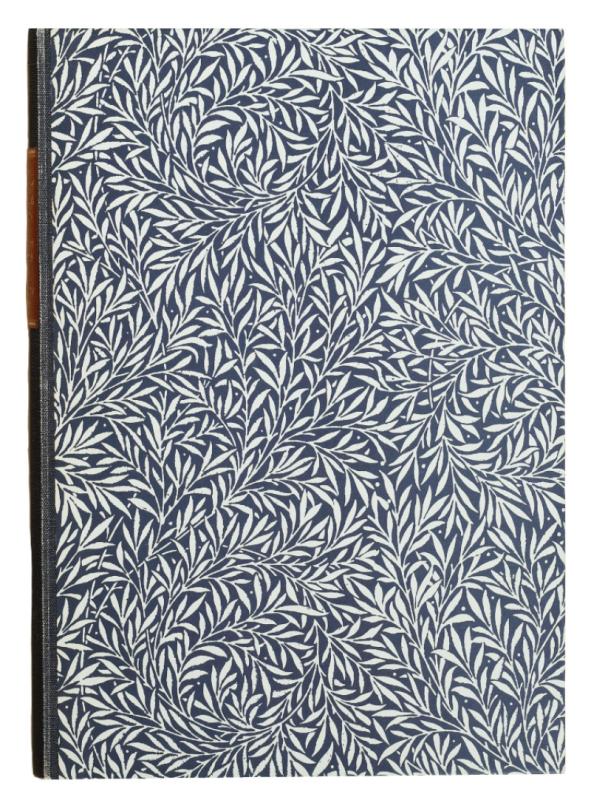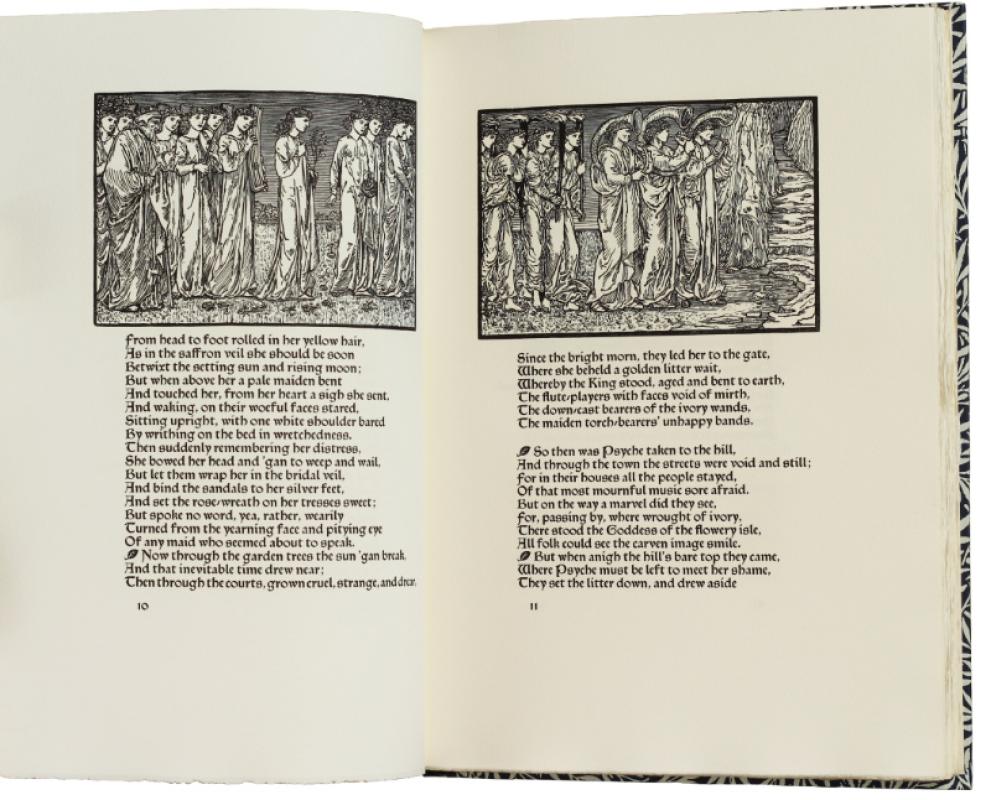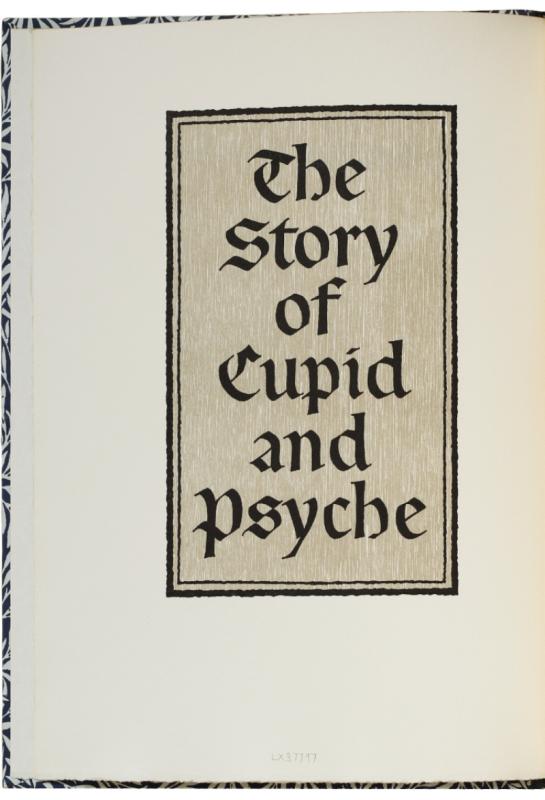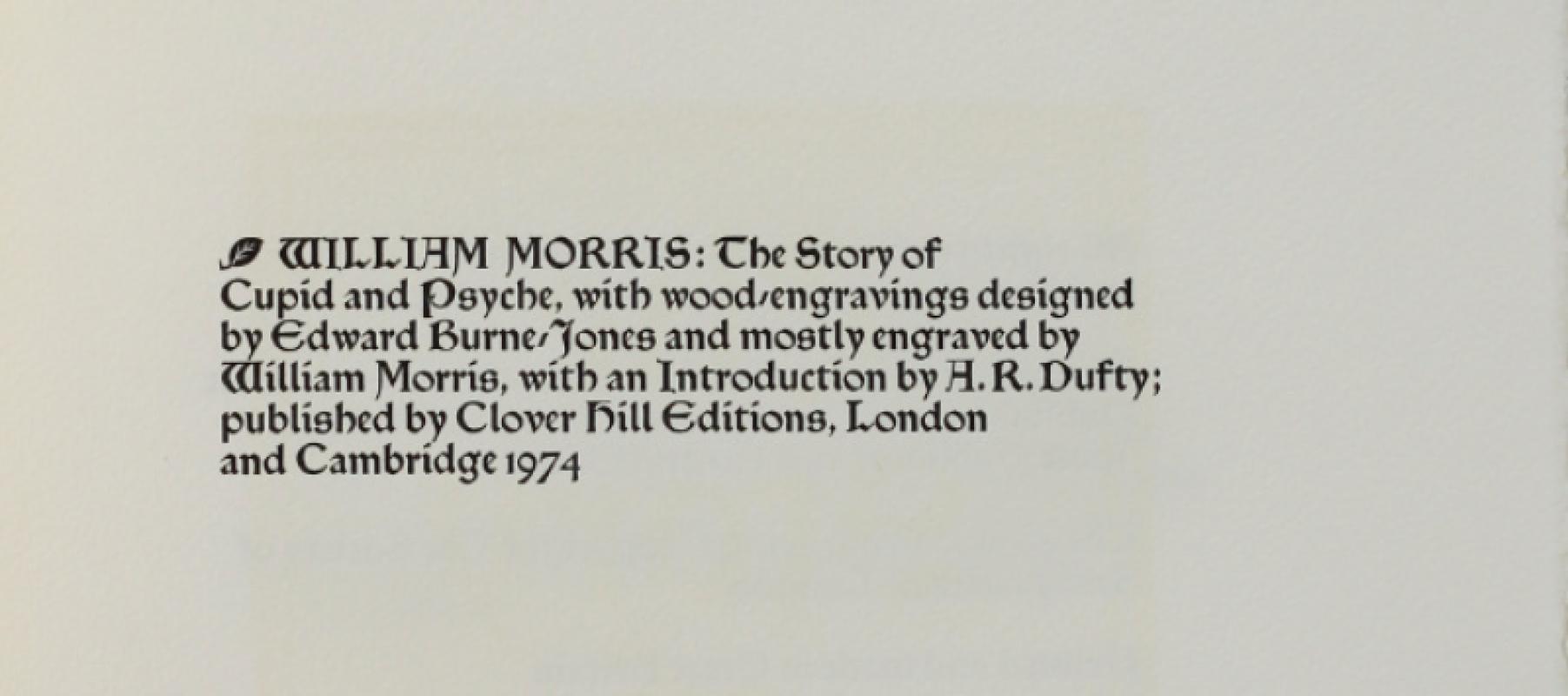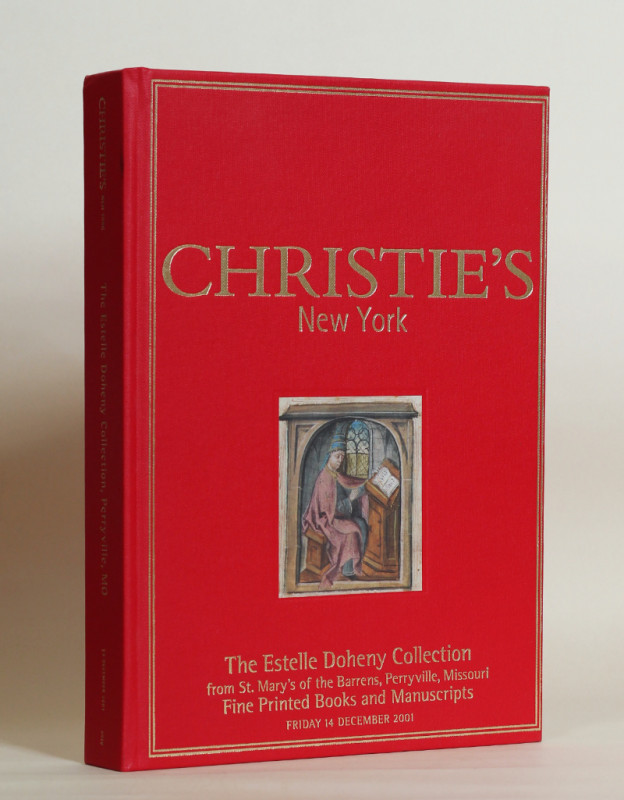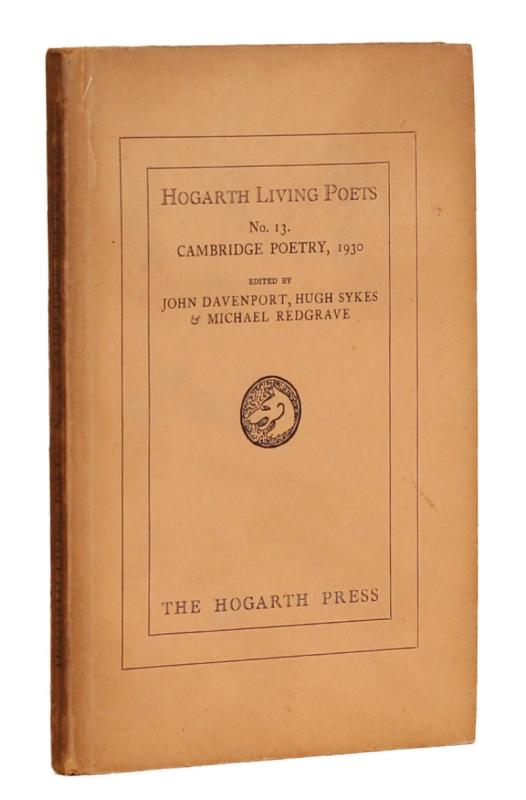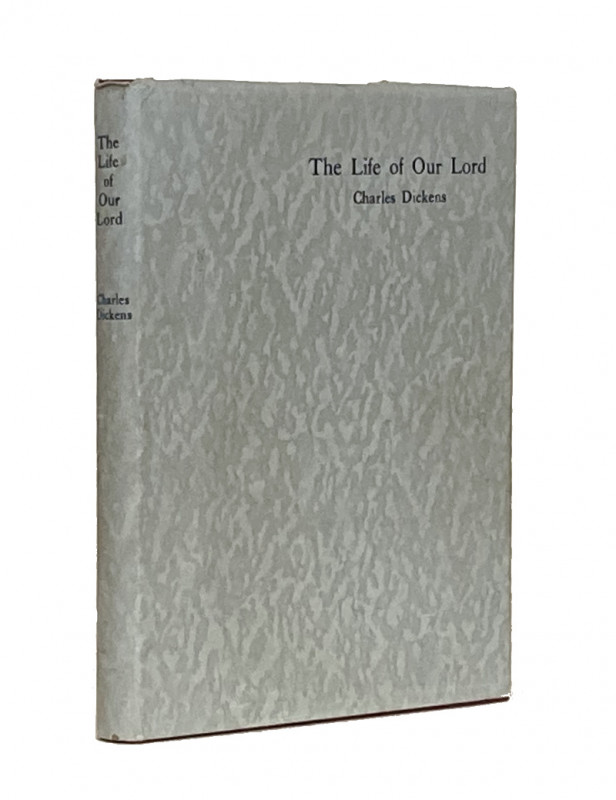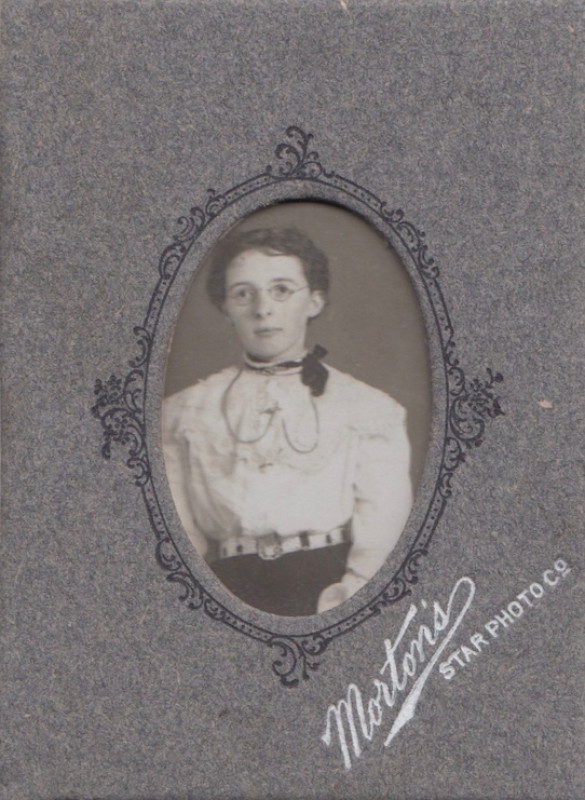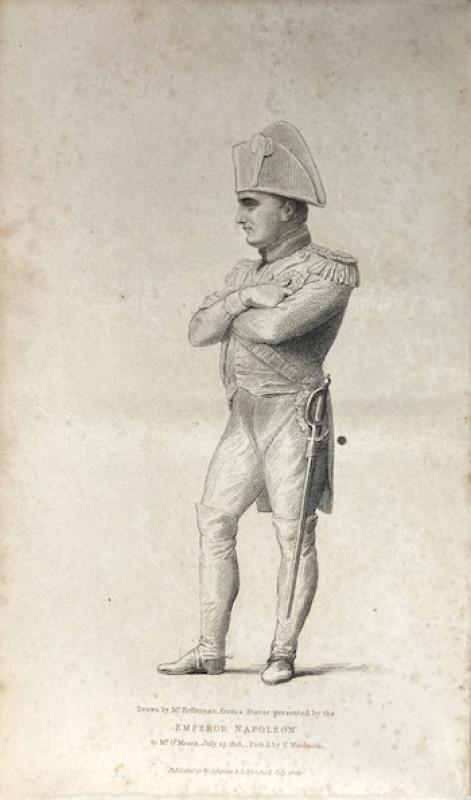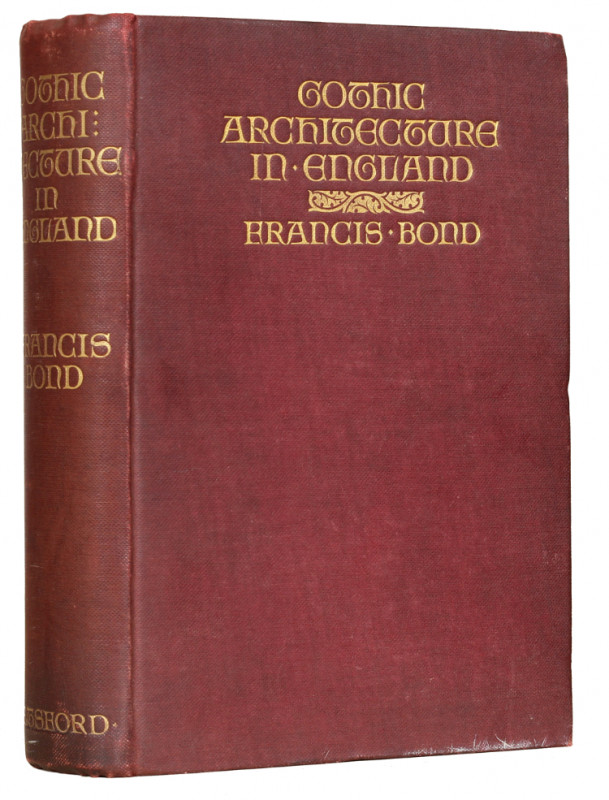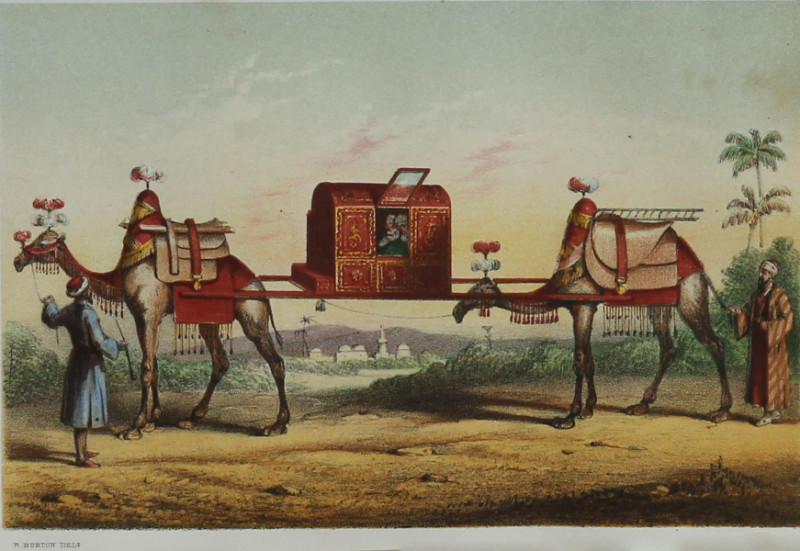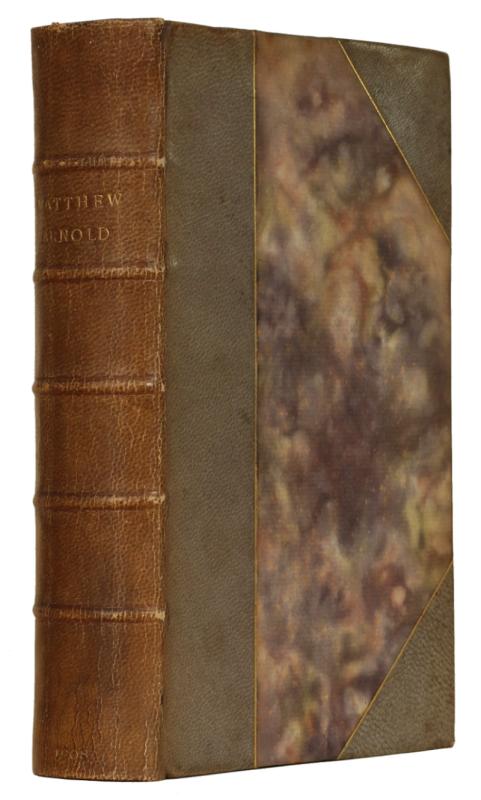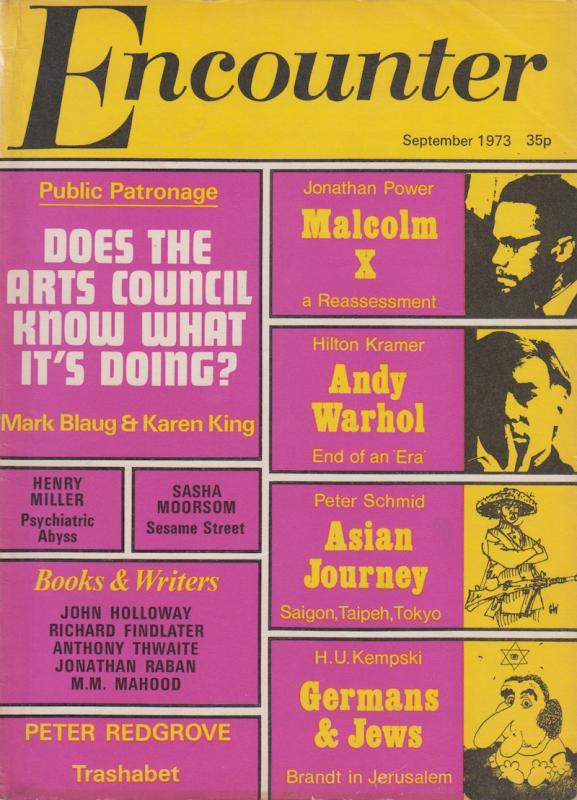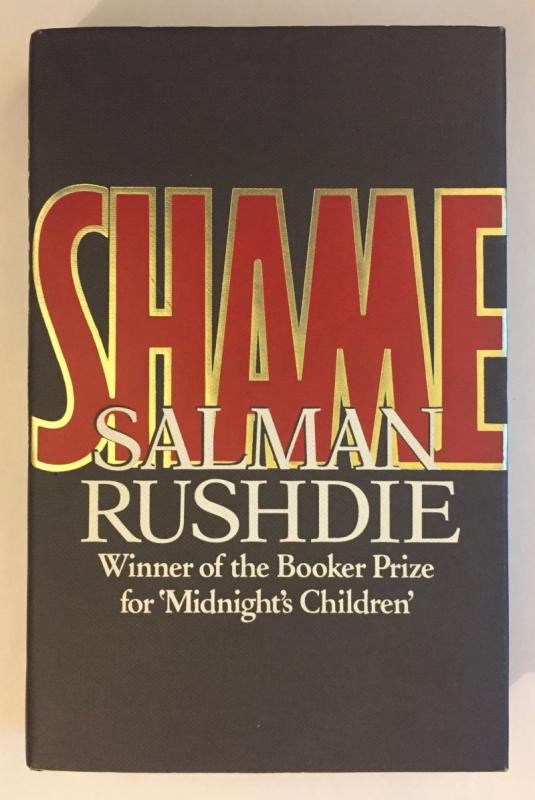The Story of Cupid and Psyche ...
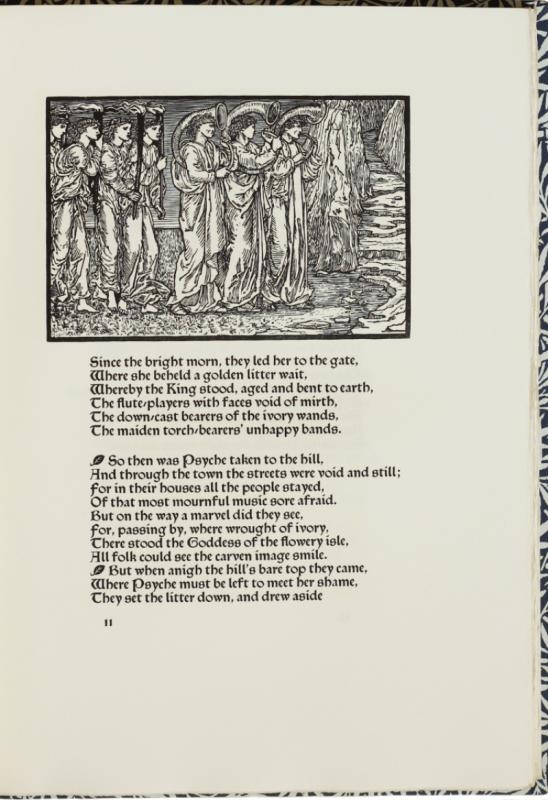


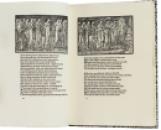

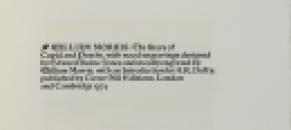
Book Description
A ‘LOST’ KELMSCOTT – AND ‘ONE OF THE GREATEST ILLUSTRATED EDITIONS OF A WORK BY MORRIS’
Full title: The Story of Cupid and Psyche, with Illustrations by Edward Burne-Jones, Mostly Engraved on the Wood by William Morris; the Introduction by A.R. Dufty. ¶
2 volumes, folio (338 x 237mm), pp. I: [4 (blank ll.)], xiv (half-title, additional title, title, colophon, limitation statement, blank, acknowledgements, blank, contents, illustrations, blank, foreword, title-vignette), 37, [1 (blank)], [2 (blank, imprint on verso)], [2 (blank l.)]; II: [2 (blank l.)], [6 (half-title, additional title, letterpress title, colophon on verso, note on the engravings, verso blank)], 92, [2 (blank l.)], [2 (imprint, verso blank)]. 44 wood-engraved illustrations by William Morris, George Campfield, George Wardle, Charles Faulkner, and Elizabeth Burden after Edward Burne-Jones in the text and 47 illustrations after Burne-Jones, Dante Gabriel Rossetti, and Morris printed recto-and-verso on 13 collotype plates printed by the Cotswold Collotype Company. Wood-engraved additional titles, one line-block title-vignette after Burne-Jones, and one folding letterpress table. Original blue buckram backed boards decorated with Morris’s ‘Willow’ pattern by John P. Gray, Cambridge, gilt morocco lettering-pieces on spines, top edges gilt, others cut (I) or uncut (II), original blue buckram slipcase with buckram-edged millboard divider. (Extremities very lightly rubbed, corners lightly bumped, small hole on vol. I rear flyleaf and free endpaper.) A very good set. Provenance: Henry Sotheran Ltd, London (bookseller’s ticket on upper pastedown of vol. I). ¶¶¶
Full title: The Story of Cupid and Psyche, with Illustrations by Edward Burne-Jones, Mostly Engraved on the Wood by William Morris; the Introduction by A.R. Dufty. ¶
2 volumes, folio (338 x 237mm), pp. I: [4 (blank ll.)], xiv (half-title, additional title, title, colophon, limitation statement, blank, acknowledgements, blank, contents, illustrations, blank, foreword, title-vignette), 37, [1 (blank)], [2 (blank, imprint on verso)], [2 (blank l.)]; II: [2 (blank l.)], [6 (half-title, additional title, letterpress title, colophon on verso, note on the engravings, verso blank)], 92, [2 (blank l.)], [2 (imprint, verso blank)]. 44 wood-engraved illustrations by William Morris, George Campfield, George Wardle, Charles Faulkner, and Elizabeth Burden after Edward Burne-Jones in the text and 47 illustrations after Burne-Jones, Dante Gabriel Rossetti, and Morris printed recto-and-verso on 13 collotype plates printed by the Cotswold Collotype Company. Wood-engraved additional titles, one line-block title-vignette after Burne-Jones, and one folding letterpress table. Original blue buckram backed boards decorated with Morris’s ‘Willow’ pattern by John P. Gray, Cambridge, gilt morocco lettering-pieces on spines, top edges gilt, others cut (I) or uncut (II), original blue buckram slipcase with buckram-edged millboard divider. (Extremities very lightly rubbed, corners lightly bumped, small hole on vol. I rear flyleaf and free endpaper.) A very good set. Provenance: Henry Sotheran Ltd, London (bookseller’s ticket on upper pastedown of vol. I). ¶¶¶
Dealer Notes
First edition illustrated with Morris’s engravings, limited to 400 sets, this no. 38 of 270. In the 1860s William Morris had planned an edition of his poem The Earthly Paradise to be illustrated by Edward Burne-Jones, and Burne-Jones had drawn some 60 or 70 illustrations for the ‘The Story of Cupid and Psyche’ section of The Earthly Paradise. Some 50 of the illustrations were engraved as woodcuts – 36 or more of these by Morris himself, on the only occasion on which he is known to have engraved woodblocks – but the projected edition was abandoned. An edition was then begun in 1897 by the Kelmscott Press, but only seven specimen pages were printed, and the edition was once more abandoned after Burne-Jones’s death in 1898. 44 of the woodblocks cut for the projected book were bequeathed by May Morris to the Society of Antiquaries of London, where they remained unnoticed until 1968. ¶¶
Following the rediscovery of the woodblocks, Will and Sebastian Carter’s Rampant Lions Press printed their remarkable edition of this ‘lost’ Kelmscott in 1974, using the Society of Antiquaries blocks together with Kelmscott Press Troy types loaned by the Cambridge University Press and cast by Vivian Ridler at the Oxford University Press foundry. Not only is this the first publication of the series of 44 wood-engravings as they were intended to be seen, but, as the acknowledgements note, The Story of Cupid and Psyche is ‘the first book printed in the Kelmscott Troy type since the Kelmscott Press came to an end in 1898’ (I, p. vii). As Coupe comments, ‘the Carters achieved a superb integration of text and illustration. This is one of the greatest illustrated editions of a work by Morris’. ¶¶
The slipcases for these 270 sets issued by Clover Hill Editions are known in two forms: in the first, the slipcases are fully covered in blue buckram, with a blue buckram edged central divider (as here), and in the second the sides of the slipcases are covered in ‘Willow’ pattern paper and the ends in blue buckram. Although it has not been possible to establish priority with absolute certainty, the blue buckram slipcases we have handled have been found on sets with limitation numbers below 90, while the ‘Willow’ pattern slipcases are usually found on sets with numbers higher than 90 – suggesting that these slipcases were used on later sets (it seems likely that sets of sheets were bound as orders were received). Carter notes that the 270 sets were ‘bound by John P Gray (later copies by George Bolton)’, and it seems possible that the ‘Willow’ pattern slipcases were issued with sets bound by Bolton. Apart from the edition of 400 sets of books, Clover Hill Editions also issued 100 portfolios containing proofs of the wood-engravings. ¶¶
This set was acquired by the previous owner from Henry Sotheran Ltd, the longest-established active antiquarian bookseller in England, which counted William Morris among its clients (cf. W. Peterson, Bibliography of the Kelmscott Press, p. 20). ¶¶
S. Carter, The Rampant Lions Press: A Narrative Catalogue, 121; R.L.M. Coupe, Illustrated Editions of the Works of William Morris in English, 4.5b (‘contained in a plain blue cloth-covered slip case’); E. Le Mire, William Morris, A-137.01; for the projected Kelmscott edition, cf. W. Peterson, Bibliography of the Kelmscott Press, B6 and L. Parry (ed.) William Morris, catalogue no. O.2a-b.
Following the rediscovery of the woodblocks, Will and Sebastian Carter’s Rampant Lions Press printed their remarkable edition of this ‘lost’ Kelmscott in 1974, using the Society of Antiquaries blocks together with Kelmscott Press Troy types loaned by the Cambridge University Press and cast by Vivian Ridler at the Oxford University Press foundry. Not only is this the first publication of the series of 44 wood-engravings as they were intended to be seen, but, as the acknowledgements note, The Story of Cupid and Psyche is ‘the first book printed in the Kelmscott Troy type since the Kelmscott Press came to an end in 1898’ (I, p. vii). As Coupe comments, ‘the Carters achieved a superb integration of text and illustration. This is one of the greatest illustrated editions of a work by Morris’. ¶¶
The slipcases for these 270 sets issued by Clover Hill Editions are known in two forms: in the first, the slipcases are fully covered in blue buckram, with a blue buckram edged central divider (as here), and in the second the sides of the slipcases are covered in ‘Willow’ pattern paper and the ends in blue buckram. Although it has not been possible to establish priority with absolute certainty, the blue buckram slipcases we have handled have been found on sets with limitation numbers below 90, while the ‘Willow’ pattern slipcases are usually found on sets with numbers higher than 90 – suggesting that these slipcases were used on later sets (it seems likely that sets of sheets were bound as orders were received). Carter notes that the 270 sets were ‘bound by John P Gray (later copies by George Bolton)’, and it seems possible that the ‘Willow’ pattern slipcases were issued with sets bound by Bolton. Apart from the edition of 400 sets of books, Clover Hill Editions also issued 100 portfolios containing proofs of the wood-engravings. ¶¶
This set was acquired by the previous owner from Henry Sotheran Ltd, the longest-established active antiquarian bookseller in England, which counted William Morris among its clients (cf. W. Peterson, Bibliography of the Kelmscott Press, p. 20). ¶¶
S. Carter, The Rampant Lions Press: A Narrative Catalogue, 121; R.L.M. Coupe, Illustrated Editions of the Works of William Morris in English, 4.5b (‘contained in a plain blue cloth-covered slip case’); E. Le Mire, William Morris, A-137.01; for the projected Kelmscott edition, cf. W. Peterson, Bibliography of the Kelmscott Press, B6 and L. Parry (ed.) William Morris, catalogue no. O.2a-b.
Author
MORRIS, William
Date
1974
Publisher
London and Cambridge: Rampant Lions Press for Clover Hill Editions
Friends of the PBFA
For £10 get free entry to our fairs, updates from the PBFA and more.
Please email info@pbfa.org for more information
